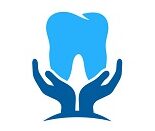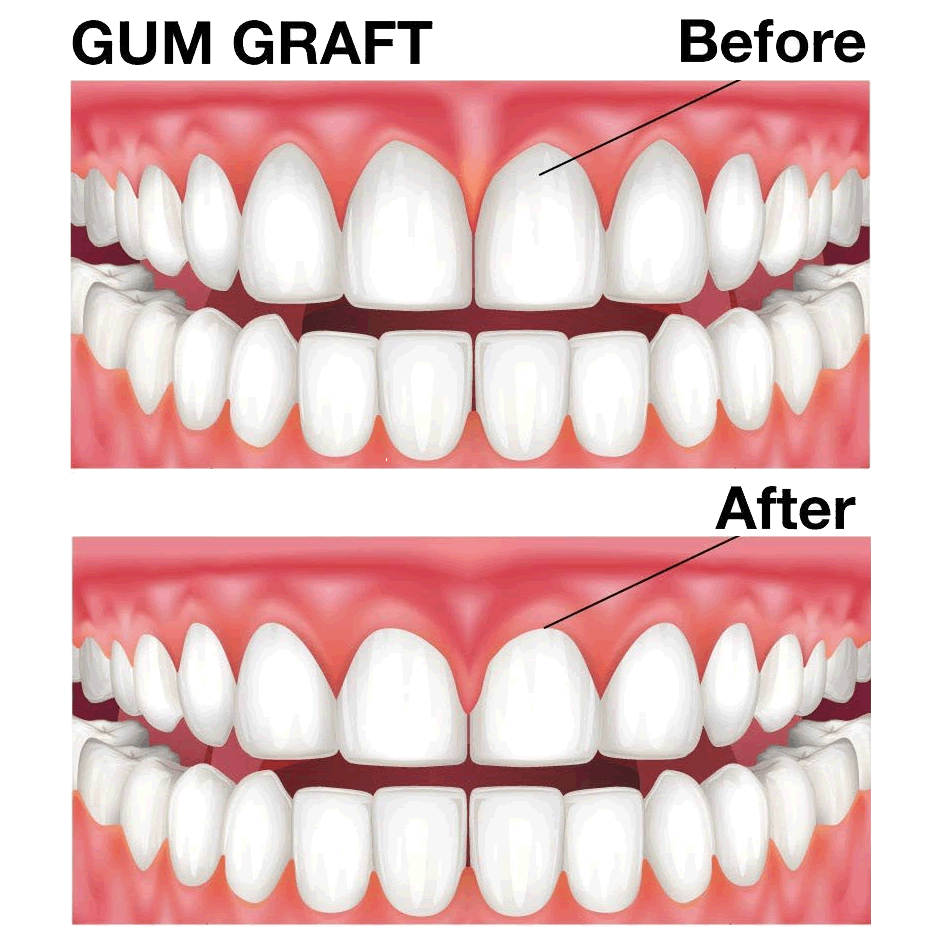Post-Gum Grafting Care: Ensuring Successful Healing
After undergoing gum grafting surgery, you may be eager to get back to your normal routine. However, it’s crucial to pay attention to your post-gum grafting care in order to ensure successful healing. Taking the time to properly care for your gums after the procedure can make all the difference in the final outcome.
From maintaining proper oral hygiene practices to managing any discomfort that may arise, there are several steps you can take to promote optimal healing and achieve the best results.
So, let’s explore the essential post-gum grafting care routines that will help you achieve a successful recovery.
Importance of Post-Care Routines
Why is following a post-care routine crucial after gum grafting surgery?
Well, let me tell you. After undergoing gum grafting surgery, your gums need time to heal and recover. Following a post-care routine is essential to ensure successful healing and minimize complications.
Firstly, it helps to prevent infection. By keeping your mouth clean and following the instructions of your dentist, you can reduce the risk of bacteria entering the surgical site and causing an infection.
Secondly, a post-care routine promotes proper healing. It includes actions such as taking prescribed medications, avoiding strenuous activities, and maintaining a soft food diet. These measures allow your gums to heal without interference, leading to better and faster healing outcomes.
Additionally, following a post-care routine can help manage discomfort and minimize swelling. By using ice packs, taking pain medications as prescribed, and avoiding spicy or hot foods, you can alleviate discomfort and reduce swelling.
Proper Oral Hygiene Practices
To maintain optimal oral health after gum grafting surgery, it’s important to follow proper oral hygiene practices. Here are three key practices to ensure successful healing:

1. Gentle brushing: Use a soft-bristled toothbrush to gently brush your teeth and gums. Be careful not to apply too much pressure, as this can damage the healing gum tissue. Brush at least twice a day, focusing on all areas of your mouth, including the gumline.
2. Rinsing with saltwater: Rinse your mouth with warm saltwater several times a day, especially after meals. Saltwater helps to reduce inflammation, alleviate discomfort, and promote healing. Dissolve half a teaspoon of salt in a cup of warm water, swish it around your mouth for about 30 seconds, and then spit it out.
3. Avoiding irritants: Stay away from irritants that can hinder the healing process. This includes smoking, which can delay healing and increase the risk of complications. Additionally, avoid eating hard, crunchy, or spicy foods that can irritate the surgical site. Stick to a soft diet and consume lukewarm or cool foods and beverages.
Managing Discomfort After Gum Grafting
To alleviate any discomfort after gum grafting surgery, there are several steps you can take.
First and foremost, make sure to take any prescribed pain medication as directed by your dentist or oral surgeon. This will help manage any pain or discomfort you may experience during the healing process.
Additionally, applying an ice pack to the outside of your face near the surgical site can help reduce swelling and numb the area, providing some relief. It’s important to remember to only apply the ice pack for 15 minutes at a time, with at least 15 minutes of rest in between.
Another helpful tip is to avoid hot or spicy foods, as they can irritate the surgical site and increase discomfort. Stick to soft, cool foods like yogurt, mashed potatoes, and smoothies for the first few days after surgery.
Lastly, maintaining good oral hygiene is crucial for reducing discomfort and promoting healing. Gently brush your teeth with a soft-bristled toothbrush and rinse your mouth with a saltwater solution to keep the surgical area clean.
Following Dentist’s Instructions
After gum grafting surgery, it’s crucial to carefully follow your dentist’s instructions to ensure proper healing and minimize any potential complications. Your dentist will provide you with specific post-operative instructions tailored to your individual needs.
Here are three important aspects to keep in mind:
1. Medication: Your dentist may prescribe pain medication and antibiotics to manage discomfort and prevent infection. It’s essential to take these medications as instructed, even if you start feeling better. Completing the full course of antibiotics is crucial to prevent any post-operative infections.
2. Oral hygiene: Maintaining good oral hygiene is crucial for successful healing. Your dentist may recommend using a special mouthwash or an antimicrobial rinse to keep the surgical site clean. It’s important to gently brush your teeth twice a day with a soft-bristle toothbrush and avoid flossing near the surgical area until your dentist gives you the green light.
3. Diet: Following a soft and nutritious diet is essential during the healing process. Stick to soft foods that require minimal chewing, such as yogurt, mashed potatoes, and soups. Avoid hot and spicy foods, as well as drinks and foods that are too cold. It’s also important to stay hydrated by drinking plenty of water.
Promoting Optimal Healing and Results
Taking proactive steps can help promote optimal healing and achieve the best results after gum grafting surgery. One important step is to maintain good oral hygiene by gently brushing your teeth twice a day with a soft-bristled toothbrush. Be sure to use a gentle, circular motion and avoid brushing too aggressively, as this can irritate the gum tissue.
It’s also crucial to avoid smoking and using tobacco products, as they can hinder the healing process and increase the risk of complications.
To further promote healing, it’s recommended to follow a soft diet for the first few days after surgery. Stick to softer foods that require minimal chewing, such as yogurt, mashed potatoes, and soup. Avoid hard, crunchy, or spicy foods that can irritate the surgical site. Additionally, it’s important to stay hydrated by drinking plenty of water, but avoid using a straw, as the sucking motion can disrupt the healing process.
Taking over-the-counter pain relievers, such as ibuprofen, can help manage any discomfort and swelling. However, it’s essential to consult with your dentist or oral surgeon before taking any medication. They can provide specific guidelines and recommendations based on your individual needs.
Frequently Asked Questions
How Long Does It Take for the Gum Graft to Fully Heal?
It takes time for your gum graft to fully heal. The length of healing can vary depending on the individual, but on average, it may take several weeks to a few months.
During this time, it’s important to follow proper post-gum grafting care to ensure successful healing. This includes practicing good oral hygiene, avoiding hard or crunchy foods, and attending follow-up appointments with your dentist.
Remember to be patient and allow your body to heal at its own pace.
Can I Consume Hot or Cold Foods and Drinks After Gum Grafting?
You can consume hot or cold foods and drinks after gum grafting, but it’s important to be cautious. Hot foods and drinks can irritate the surgical area, while cold ones can cause sensitivity.
It’s best to stick to lukewarm or room temperature options for the first few days. Gradually reintroduce hotter or colder items as your gums heal.
Remember to follow any specific instructions given by your dentist for the best results.
Are There Any Specific Foods I Should Avoid During the Healing Process?
During the healing process after gum grafting, there are certain foods you should avoid to promote successful healing. It’s recommended to steer clear of hot and spicy foods, as well as foods that are hard or crunchy. These can irritate the surgical site and hinder the healing process.
Instead, opt for softer, easier-to-chew foods that are gentle on your gums. Remember to follow your dentist’s instructions and maintain good oral hygiene to ensure a smooth recovery.
When Can I Resume My Normal Oral Hygiene Routine, Including Brushing and Flossing?
When can you resume your normal oral hygiene routine, including brushing and flossing?
It’s important to wait until your gums have fully healed before returning to your regular oral hygiene routine. This typically takes around 7-10 days.
In the meantime, you can gently rinse your mouth with a saltwater solution to keep it clean.
Once your gums have healed, you can resume brushing and flossing, being careful to avoid putting excessive pressure on the surgical site.
Is It Normal to Experience Some Bleeding or Swelling After the Gum Grafting Procedure?
Yes, it’s normal to experience some bleeding or swelling after the gum grafting procedure. This is a common side effect and should subside within a few days. To help reduce the swelling, you can apply an ice pack to the affected area for 10-15 minutes at a time.
Avoid brushing or flossing directly on the graft site for the first week, but continue with your regular oral hygiene routine for the rest of your mouth.
Conclusion
Taking care of your gums after a gum grafting procedure is crucial for successful healing. By following proper oral hygiene practices, managing discomfort, and following your dentist’s instructions, you can promote optimal healing and achieve the desired results.
Remember to brush gently, avoid hard or sticky foods, and use any prescribed m click edications or rinses as directed.
With consistent care and attention, you can ensure a successful recovery and maintain a healthy gum line.

Welcome to my website! I am Patrick Oxenham, a dedicated and passionate Pediatric Dentist with years of experience in providing comprehensive dental care for children. I am thrilled to share my knowledge and expertise in smile restoration methods, aesthetic dentistry updates, and gum health and grafting with you.

